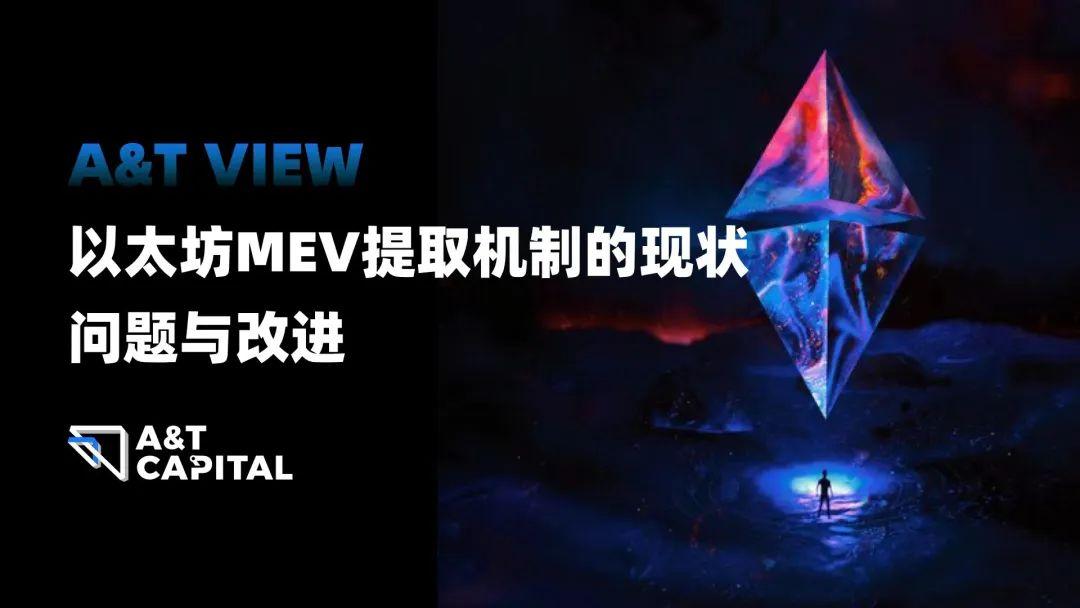A&T Capital: A Comprehensive Interpretation of the Scalable Solution "Rollups as a Service" Ecosystem
Author: Shervin Beyk, Investment Manager at A&T Capital
I. Overview of Rollup Technology
 Source: @pseudotheos
Source: @pseudotheos
Rollups alleviate the performance bottleneck of Layer 1 by efficiently executing transactions off-chain and returning verifiable execution results on-chain. The security of Rollups derives from the consensus and data availability of the underlying Layer 1. Despite being in the early stages of development, the Rollup ecosystem offers versatile designs for dApp developers due to its modular and customizable nature.
Rollups can be general-purpose, such as Arbitrum and Optimism, or designed for specific applications. General-purpose Rollups rely on Layer 1 for settlement, consensus, and data availability storage, and may cause congestion in the underlying Layer 1 network due to high Layer 2 transaction demand. On the other hand, application-specific Rollups are similar to application chains but consume fewer resources as they do not require a separate set of validators. In summary, Rollups are not limited to a single blockchain development framework and can be customized to meet specific operational needs.
II. Overview of Rollups-as-a-Service (RaaS)

Rollup-as-a-Service (RaaS) projects aim to revolutionize the deployment of Rollups by providing easy-to-use tools and services that abstract complex technical details, making them accessible to everyone. These projects offer a variety of options, from SDKs and user-friendly no-code interfaces to seamless one-click deployment solutions. Additionally, there are Rollup Sequencer-as-a-Service (RSaaS) solutions being developed to provide shared decentralized sequencing capabilities for multiple Rollups. The sequencer is a component of the Rollup framework responsible for grouping transactions and submitting compressed data to the underlying layer. This decentralized design provides strong resistance to censorship and ensures the continuous operation of the network, achieving secure and seamless transaction processing.
2.1 SDK
Celestia's Rollkit is a solution that enables autonomous Rollup deployment, offering complete control over execution and settlement. It is built using a modified version of the Cosmos SDK and communicates via IBC. Once deployed, these Rollups use Celestia for consensus and data availability.
OP Stack
The OP Stack utilizes OP Rollup technology to organize the network into three distinct layers: consensus layer, execution layer, and settlement layer. To simplify development, these three layers are standardized through APIs, allowing developers to easily fork and assemble components to meet their specific needs.
Dymension
Dymension's RDK, similar to the Cosmos SDK, supports multiple virtual machines. This allows developers to choose from various smart contract platforms, such as CosmWasm or Ethermint, or any other platform supported by the Cosmos ecosystem.
Sovereign SDK
The Sovereign SDK is designed to simplify the creation of zk-Rollups, just as the Cosmos SDK simplifies App-chain development. It will be the first Rollup framework to eliminate the complexities of zero-knowledge proofs, enabling developers to easily build their applications without requiring advanced cryptographic skills. With the Sovereign SDK, developers can write their applications in Rust or C++, and the SDK will handle compiling them into efficient zk virtual machines.
Most RaaS projects utilize these SDKs to develop easy-to-use, no-code Rollup deployment solutions. The market for Rollups as a Service (RaaS) has been rapidly growing, with various SDKs emerging to meet developers' needs. These SDKs offer a range of features and options to simplify the Rollup deployment process, including complete control over execution and settlement, standardization of the network across different layers, compatibility with various virtual machines, and simplification of zk-Rollup creation.
Summary
Celestia's Rollkit uses the Cosmos SDK and communicates via IBC, providing a solution for deploying sovereign Rollups. The OP Stack standardizes the network into three layers through APIs, making development easier. Dymension's RollApp Kit offers compatibility with various virtual machines, allowing developers to choose from different smart contract platforms. The Sovereign SDK is the first Rollup framework to eliminate the complexities of zero-knowledge proofs, allowing developers to easily build applications without requiring advanced cryptographic skills.
The availability of these SDKs means: (1) the RaaS market is maturing; (2) there is a demand for easy-to-use, user-friendly Rollup deployment solutions.
Each SDK offers unique advantages, allowing developers to choose the most suitable SDK based on their needs and requirements.
2.2 No-Code Rollup Deployment

Source: @0xConstellation
Constellation
Constellation allows developers to easily deploy Rollups using the OP Stack. These Rollups are compatible with OP EVM and optimized for fast performance. Each "Constellation chain" includes a block explorer and bridging options that can be customized based on block time and account permissions.
AltLayer
AltLayer enables developers to launch scalable OP Rollup execution layers. Each Rollup is customized for specific applications, and the platform is designed to work with multiple blockchains and virtual machines. It supports Ethereum (EVM) and WebAssembly (WASM) for versatility. AltLayer serves as a flexible scaling solution for all compatible chains, not limited to a single Layer 1 or Layer 2.
Eclipse
Eclipse provides scalable options for developers to create and deploy their own Rollups while also allowing them to choose any blockchain for increased security and data storage.
Saga
Saga is developing Web3 infrastructure to enable developers to create applications with exclusive block space. This exclusive block space guarantees fast speeds, independence from other applications using Saga, seamless upgrades, and reduced congestion.
Many RaaS projects are beginning to focus on a specific area, often starting with OP. Some projects are immediately focusing on zk-RaaS. The ultimate goal of most projects is to provide a flexible RaaS solution suitable for various execution environments, deployment types, zk or OP, and sequencers, offering flexible options for settlement, consensus, and data availability.
Summary
In summary, the no-code Rollup deployment solutions listed above aim to provide developers with tools and resources for efficiently deploying scalable Rollup solutions. Each solution has its unique features, such as compatibility with various blockchains and virtual machines, customizable block explorers and bridges, and dedicated block space for rapid and efficient application development. These solutions help advance Rollup technology by providing flexible and diverse options to meet the specific needs of each project. As technology continues to evolve and mature, developers can expect the emergence of more advanced and feature-rich no-code Rollup deployment solutions.
2.3 Shared Transaction Sequencers
Transaction sequencers are nodes that collect transactions, create blocks, and send compressed transaction information to the main layer. Currently, all mainnet Rollups use centralized transaction sequencers, but RaaS projects like The Optimism Collective, Dymension, and Saga are developing decentralized transaction sequencer systems.
For the Optimism Collective, Optimism is creating a set of shared transaction sequencer nodes for chains built using the OP Stack. Chains using the OP Stack can choose to join the group of transaction sequencer nodes managed by the Optimism Collective.
Regarding Dymension, nodes will hold Dymension's native token on the Dymension settlement layer and will be elected based on their staking weight. Finally, Saga is creating a set of transaction sequencer nodes for Rollkit-driven chains through RaaS. Operators will be assigned tasks in the Rollup based on their staking weight, and they may lose their tokens if they are censored or experience downtime.
Decentralized transaction sequencer nodes handle multiple Rollup applications simultaneously and use cryptocurrency as incentives. Through shared transaction sequencer nodes, cross-chain Rollup communication can be secure and reliable, as blocks on various chains are generated simultaneously.
III. Conclusion: Advantages of RaaS
More control and customization: Rollups as a Service (RaaS) provides developers with greater control over application development and deployment. This increased control allows developers to customize their applications according to specific business needs and offers greater flexibility in choosing features and functionalities that best meet their requirements.
Avoid sudden increases in transaction fees: One of the key advantages of RaaS is that it minimizes the risk of sudden increases in transaction fees due to network congestion. This ensures that developers can deploy their applications without worrying about the negative impacts of unexpected fee increases.
Low-latency and high-throughput experience: RaaS offers developers a low-latency and high-throughput experience, which is crucial for applications requiring real-time transactions. This provides developers with the ability to build and deploy fast and reliable applications to meet customer demands.
Bridging fees
Serialization fees
Rollup development fees
Settlement layer fees
Empowering developers to realize their vision without compromise: Fundamentally, RaaS liberates developers, allowing them to create what they envision within the constraints faced in current blockchain development.
Internalizing MEV: RaaS provides developers with the ability to internalize miner extractable value (MEV), which can increase the overall profitability of applications.
Potential for transaction fees as protocol revenue: RaaS offers the potential to capture transaction fees as protocol revenue, which can enhance the overall profitability of applications.
Increasing the utility of repurchased native tokens: RaaS adds more utility to repurchased native tokens, which can enhance their overall value and provide additional benefits to token holders.

Source: Constellation Feature Map
Summary
Despite the many advantages offered by Rollups-as-a-Service, new technologies still carry potential risks. These risks include centralization, security vulnerabilities, and the fragility of bridging, as well as the fragmentation of liquidity. Despite these concerns, as technology advances, Rollups will simplify the experience for developers and users through improved user interfaces and greater flexibility in native token economic design. By enhancing security, reducing costs, and providing more control, Rollups have the potential to transform the way blockchain applications are developed and used. By carefully assessing these risks and benefits, developers can leverage Rollups-as-a-Service to address their specific needs.










